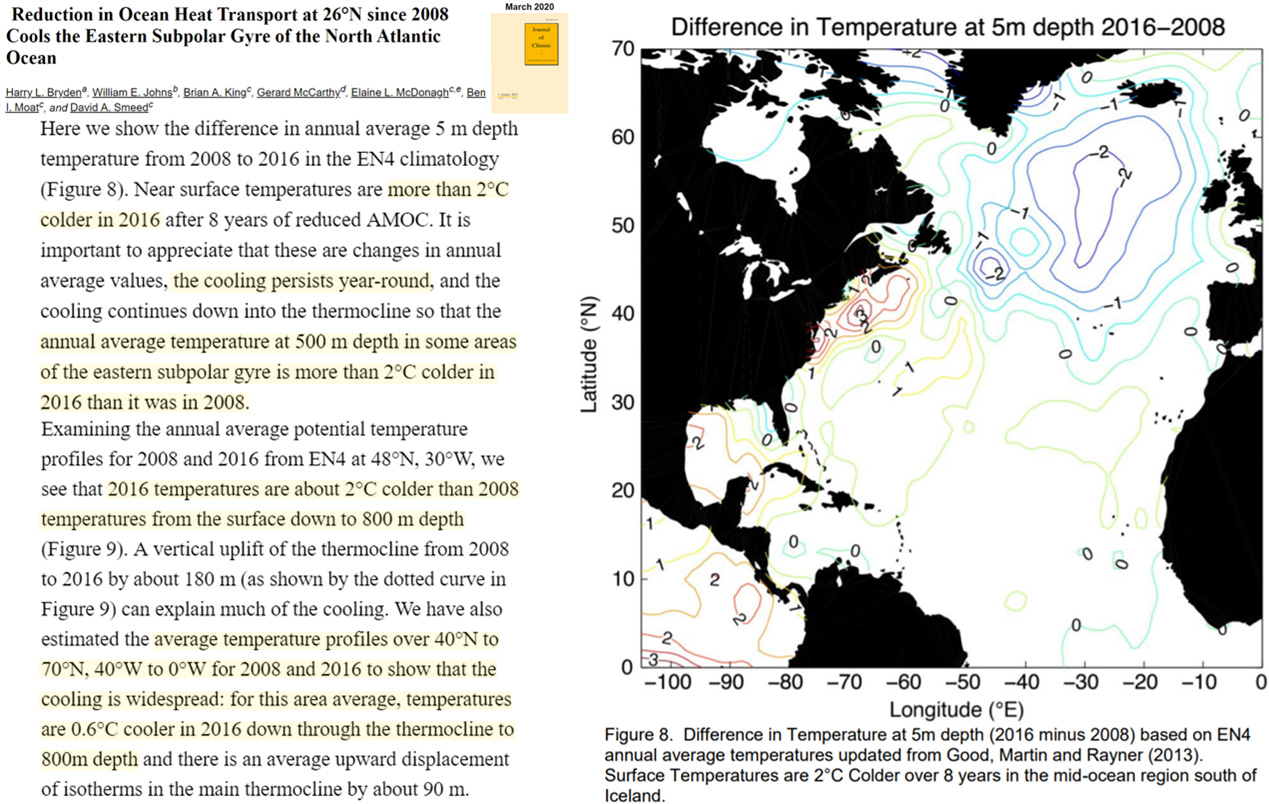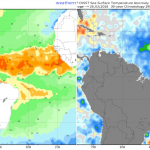- Joined
- Jan 25, 2012
- Messages
- 45,038
- Reaction score
- 14,533
- Location
- Texas
- Gender
- Male
- Political Leaning
- Conservative
Only when one considers the length of the record, 42 years!Record low means just what it says.
Only when one considers the length of the record, 42 years!Record low means just what it says.



NEWSFLASH! It still gets cold in the Arctic! STOP THE PRESSES!
The really interesting trends are related to multiyear sea ice. This is ice that forms and sticks around for a few years. As opposed to just, you know, freezing because it's cold.
"The disappearance of the older and thicker classes of sea ice are leaving an ice pack that is more vulnerable to melting in the summer, and liable to move unpredictably. When scientists began measuring Arctic ice thickness in 1985, 16% of the ice pack was very old (i.e., multiyear) ice. In 2018, old ice constituted less than 1% of the ice pack, meaning that very old Arctic ice has declined by 95% in the last 33 years" (SOURCE)
"But overall, multiyear sea ice continues to decline in the Arctic (Perovich et al. 2014)." (SOURCE)
And, as noted earlier, the cool patch in the North Atlantic seems to be quite in keeping with the possible reorganization of the thermohaline circulation due to melting of Greenland Ice Sheet ice dumping a bunch of fresh water into the AMOC causing it to slow down.
 [h=2]Multiple Recent Papers Dispel Gulf Stream Collapse, Alarming The Climate Alarmism Industry[/h]By P Gosselin on 10. June 2019
[h=2]Multiple Recent Papers Dispel Gulf Stream Collapse, Alarming The Climate Alarmism Industry[/h]By P Gosselin on 10. June 2019NEWSFLASH! It still gets cold in the Arctic! STOP THE PRESSES!
The really interesting trends are related to multiyear sea ice. This is ice that forms and sticks around for a few years. As opposed to just, you know, freezing because it's cold.
"The disappearance of the older and thicker classes of sea ice are leaving an ice pack that is more vulnerable to melting in the summer, and liable to move unpredictably. When scientists began measuring Arctic ice thickness in 1985, 16% of the ice pack was very old (i.e., multiyear) ice. In 2018, old ice constituted less than 1% of the ice pack, meaning that very old Arctic ice has declined by 95% in the last 33 years" (SOURCE)
"But overall, multiyear sea ice continues to decline in the Arctic (Perovich et al. 2014)." (SOURCE)
And, as noted earlier, the cool patch in the North Atlantic seems to be quite in keeping with the possible reorganization of the thermohaline circulation due to melting of Greenland Ice Sheet ice dumping a bunch of fresh water into the AMOC causing it to slow down.
Have you noticed how neither of your sources recognize a significant cause of the melting ice?
Ice albedo decreases....
Do you realize how much melting is caused by just a 1 point decrease in albedo, and the decreases are greater than that.
Again, ignoring an important variable.
This decrease in albedo is not caused by CO2.
Have you noticed how neither of your sources recognize a significant cause of the melting ice?
Ice albedo decreases....
Do you realize how much melting is caused by just a 1 point decrease in albedo, and the decreases are greater than that.
Again, ignoring an important variable.
This decrease in albedo is not caused by CO2.
More evidence of accelerated global warming.
Arctic Sea Ice News and Analysis | Sea ice data updated daily with one-day lag

That graph tells the story.
Did anyone say that all ice melt is due to CO2 alone?
Did anyone say that all ice melt is due to CO2 alone?
Thing is, that 2019 Arctic Report card mentions albedo loss, but not due to soot. Only summer ice melt changing it.
Do you ever read what you link, or trust due to an "appeal to authority" logical fallacy?
Of course not. Only the significant ones. When known significant variables are ignored, what does that tell you about the purpose off the document?Albedo loss but they don't list every single possible component regardless of its relative impact and that's what's sticking in your craw? The fact that they don't provide a laundry list of all the possible factors?
I was merely establishing the very real loss in MULTI-YEAR ICE. That was the goal of my post and it achieved it. (Please do try to keep up!)
Of course not. Only the significant ones. When known significant variables are ignored, what does that tell you about the purpose off the document?
We already know that it is happening. However, you use documents that ignore relevant facts.
Is it wrong for me to point that out? As a scientist, how can you trust material that is incomplete?
Hey!! Did you ever find any legitimate science to back this up or are you still all talk and no proof.
The NOAA article I posted didn't even mention CO2. It merely notes WARMING.
The NSIDC article I posted also doesn't mention CO2., again, it merely notes warming.
So your critiques are misplaced. IF they had said "It's all due to human-produced CO2 and nothing else!" you'd have a point. But they are SILENT ON THE CAUSES.
So your critique of them as "incomplete" is misplaced.
Actually soot accumulation on the ice is a real effect. And it is a testament to humanity's ability to pollute the earth quite effectively. But it is, by no means, the only cause of the melting.
It works out to about +0.3W/m2 in terms of forcing and is estimated to be something like 2X more "efficaceous" than CO2 (SOURCE), so reducing it might have some significant positive impacts to ameliorating some of the warming, but because black carbon and soot are often relatively "short term" forcings (ie once washed away or covered with more snow then not really as big an impact) it isn't going to "save" us.
Besides, it's actually a great indicator that we are still spewing out gigatons of additional CO2 into the atmosphere since it is mostly coming from diesel engines, fossil fuel burning, and small industrial output along with open forest and savannah burning (some of which we are also responsible for as well).
So, yeah, BC and soot are serious things to consider. But it doesn't really alter the very real facts of AGW, it really only supports the science which is pretty well known.
Yet CO2 and AGW have been your arguments.
How badly is confirmation bias affecting your selection of what you think is relevant material? I think it's something you don't even check yourself on.
Yes, my confirmation bias pushed me into criticizing your selection. But why else did you choose it?
My point was to show that multi-year ice is decreasing.
I provided LEGITIMATE DATA to support my contention that multi-year ice is decreasing.
I looked for MULTI YEAR ICE trends.
Hey!! Did you ever find any legitimate science to back this up or are you still all talk and no proof.
Have you noticed how neither of your sources recognize a significant cause of the melting ice?
Actually soot accumulation on the ice is a real effect. And it is a testament to humanity's ability to pollute the earth quite effectively. But it is, by no means, the only cause of the melting.
It works out to about +0.3W/m2 in terms of forcing and is estimated to be something like 2X more "efficaceous" than CO2 (SOURCE), so reducing it might have some significant positive impacts to ameliorating some of the warming, but because black carbon and soot are often relatively "short term" forcings (ie once washed away or covered with more snow then not really as big an impact) it isn't going to "save" us.
Besides, it's actually a great indicator that we are still spewing out gigatons of additional CO2 into the atmosphere since it is mostly coming from diesel engines, fossil fuel burning, and small industrial output along with open forest and savannah burning (some of which we are also responsible for as well).
So, yeah, BC and soot are serious things to consider. But it doesn't really alter the very real facts of AGW, it really only supports the science which is pretty well known.
It is important to point out that variation in impurity content of snow is not the major cause of surface-albedo variation in the Arctic spring. The major variable affecting snow albedo is the effective grain size (Wiscombe and Warren, 1980), which for a nonspherical snow grain is proportional to the volume-to-area ratio (Grenfell and Warren, 1999). The effective grain radius for new snow is 50–100 μm, and for old melting snow it is ∼ 1000 μm; the corresponding broadband albedo reduction in pure deep snow is ∼ 0.12 (Fig. 1 of Warren and Wiscombe, 1985). This difference is much larger than the albedo difference caused by the typical concentrations of impurities we find in Arctic snow.
Thank-you for acknowledging that.
Considering that 0.3 W/m^2 is global, just how much of an effect do you think they are attributing to the far smaller percentage of the areas it affects locally?
How much more energy yet is causing the norther ice to melt from what is absorbed rather than re-emitted? I calculated it once. Nearly all the added ice melt we see is due to albedo changes caused by soot. It's not warming causing it, but rather the loss of reflection. How much faster do you think ice melts from a -20C to a -17C condition?
When are you going to answer the question you ducked?
Yeah... I am well aware that soot helps to melt the ice and snow. The problem is that Lord of Planar has been claiming for a few years now that soot and its associated albedo change is the main cause of all the melting. I have asked Lord to back this up with something more than his say so but he has been unable to provide anything. I did, however, do a bit of research my self and found a study of Light-absorbing impurities in Arctic snow and it says this:
So... most of the reduction in albedo in the Arctic is due to the fact that the snow and ice is melting and not soot like Lord wants desperately to believe.
And I have pointed out this information to Lord more than once and he just insists on ignoring it.
Like always, you recount my point incorrectly.
My claim is that it is most of the extra melting from the natural baseline. Not most the melting. It melts the snow far more than the extra greenhouse gasses in the air.
Natural baseline?? What are you talking about?
The greenhouse gases are warming the planet. And that warming is melting more snow and ice than soot is.
How hard is this to understand?
